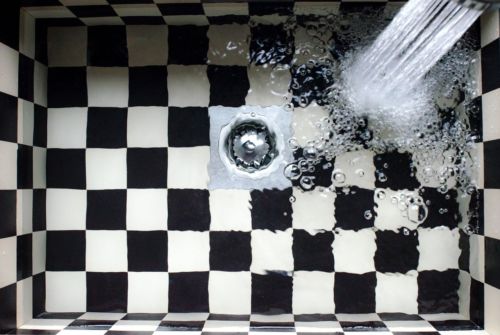Maintaining Your Home Amid Lockdown
With lockdown restrictions still in place, people are finding it tricky to undertake essential home maintenance. If you’re faced with blocked drains, you’ll want to know whether you can access help. While the vast majority of people understand the need for lockdown measures, there is still a significant amount of confusion regarding what is permitted and what isn’t.
Although non-essential services remain largely prohibited, you can still access critical maintenance services. Hiring contractors to paint the exterior of your property probably isn’t advisable right now, for example, but dealing with blocked drains and preventing flood damage is!
How To Identify Blocked Drains
Blocked drains can occur in any part of your property’s drainage system. By familiarising yourself with the tell-tale signs of a blockage, you can respond to issues before they become major problems. This minimises the amount of maintenance work required to resolve the issue, but it also prevents potential health hazards occurring in the interim. A blocked drain can typically be identified at one of three stages:
Partially Blocked
A drain that’s partially blocked may drain slowly and will often emit an unpleasant odour. Depending on where in the drainage system the blockage occurs, you could notice water draining slowly in sinks, showers, baths, toilets or in outside drains. In some cases, more than one sink or shower will be affected by a partially blocked drain, so don’t assume there’s a major problem if more than one part of your property is affected.
Complete Blockage
If a drain become completely blocked, nothing will be able to flow through it at all. This means you’ll see standing water in sinks, showers, drains, toilets and baths. If you attempt to use any of the facilities when a drain is completely blocked, the water will simply back up, overflow and flood the surrounding areas.

High pressure water jets are effective at clearing blockages
Drain Collapse
Fortunately, a partially blocked drain can be resolved quickly and easily. By taking action as soon as you notice a partial blockage, you can reduce the risk of more serious issues arising and avoid costly repair works.
In a kitchen sink drain, for example, small remnants of food could build up within the pipework. Over time, these will begin to block the drain and decompose in the process. This is what causes an unpleasant odour when your drains start to become blocked. As air from within the drain escapes into your home, it increases the number of germs and bacteria you’re breathing in.
Of course, a completed blocked drain or a collapsed pipe exposes you to even more bacteria, so it’s important to avoid these issues if it’s possible to do so. With regular maintenance and monitoring, any homeowner can identify a partially blocked drain and take restorative action before the problem worsens.
How to Deal with Blocked Drains
If you notice water is flowing slowly through a drain, you’d be right to assume that a blockage is building up. While this is the most likely cause, you won’t be able to confirm whether a blockage is present or where it is unless you’re able to see inside the drain. That’s why it can be dangerous to attempt to unblock a drain without professional assistance.
In addition to this, attempting to unblock a drain yourself could actually cause the issue to worsen. Chemical unblockers are rarely effective at dislodging partially blocked drains. If they fail to work, they could even cause a complete blockage. Furthermore, some chemical unblockers can damage plastic pipework, which could weaken the structure of your drains and cause them to collapse.

However, drain jetting isn’t only useful when you’re experiencing drainage problems. Over time, it’s normal for dirt and grime to accumulate inside drains and pipes. When this happens, the useable diameter of the drain becomes narrower. Although this may not present as a blockage, it does limit the flow of water through a drain. As this worsens, you may notice reduced pressure in your pipes or slow flowing sinks and showers. Eventually, the pipe will become so narrow due to the dirt and grime that its functionality will be severely affected. As a result, connected drains may become unusable.
By using drain jetting to clean pipework regularly, you can prevent this problem from occurring. If you arrange drain jetting before a problem becomes apparent, your drainage system will always be in good condition. By doing so, you’ll reduce the risk of other problems and keep your drainage system fully operational.
Unblocking a Drain with Jetting Equipment
Drain jetting is one of the most effective ways to successfully unblock a drain without damaging your pipework. With high pressure water, engineers will clear the drain and restore it to a fully functional state. With CCTV drain inspections, we can pinpoint exactly where the blockage is. Then, and position the jets in the most effective location to deliver a speedy resolution.
By accessing specialist help for drainage maintenance, you can also avoid having to undertake a potentiallyunpleasant job yourself. When using drain jetting equipment and CCTV drain cameras, we can offer no-dig solutions. This means we don’t need to release the contents, dig down to the pipework or replace the drain. Instead, we can simply identify the issue and unblock your drain with minimum hassle.
To find out more or to arrange drain jetting today, contact FS Drainage now on 0800 689 3497.

